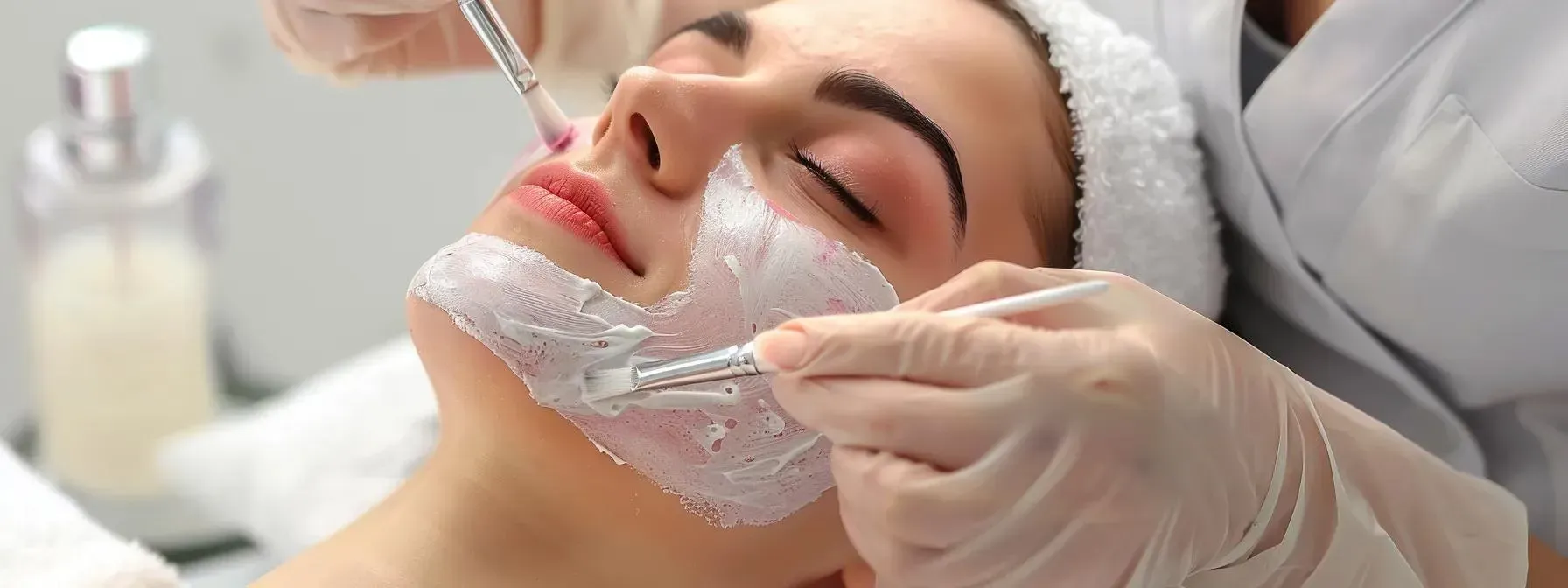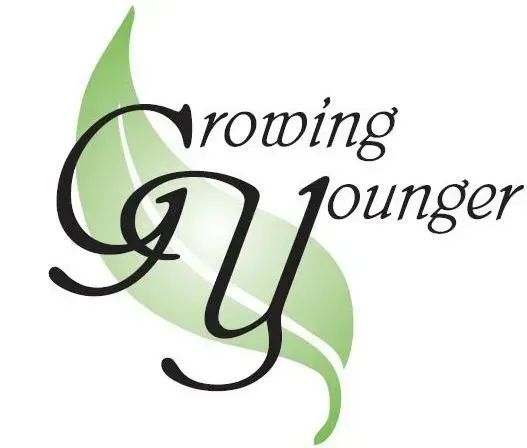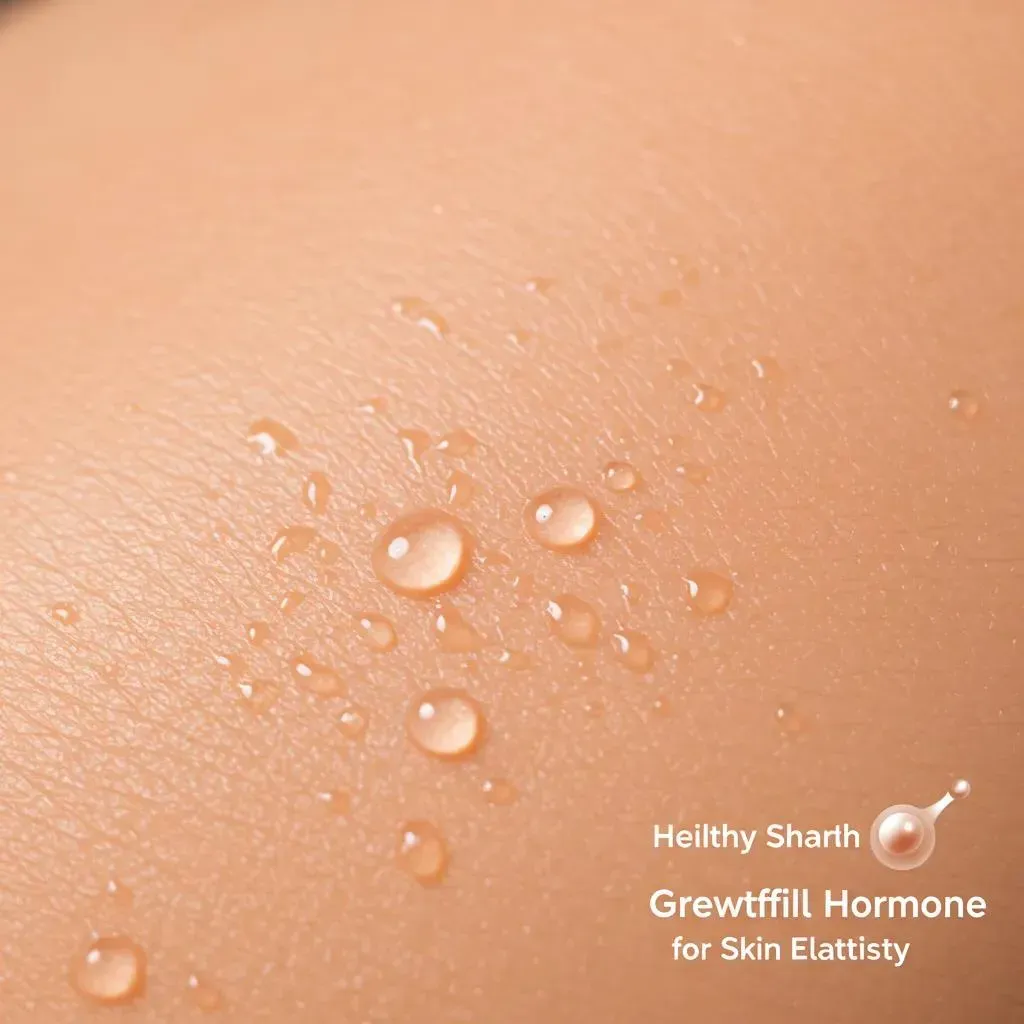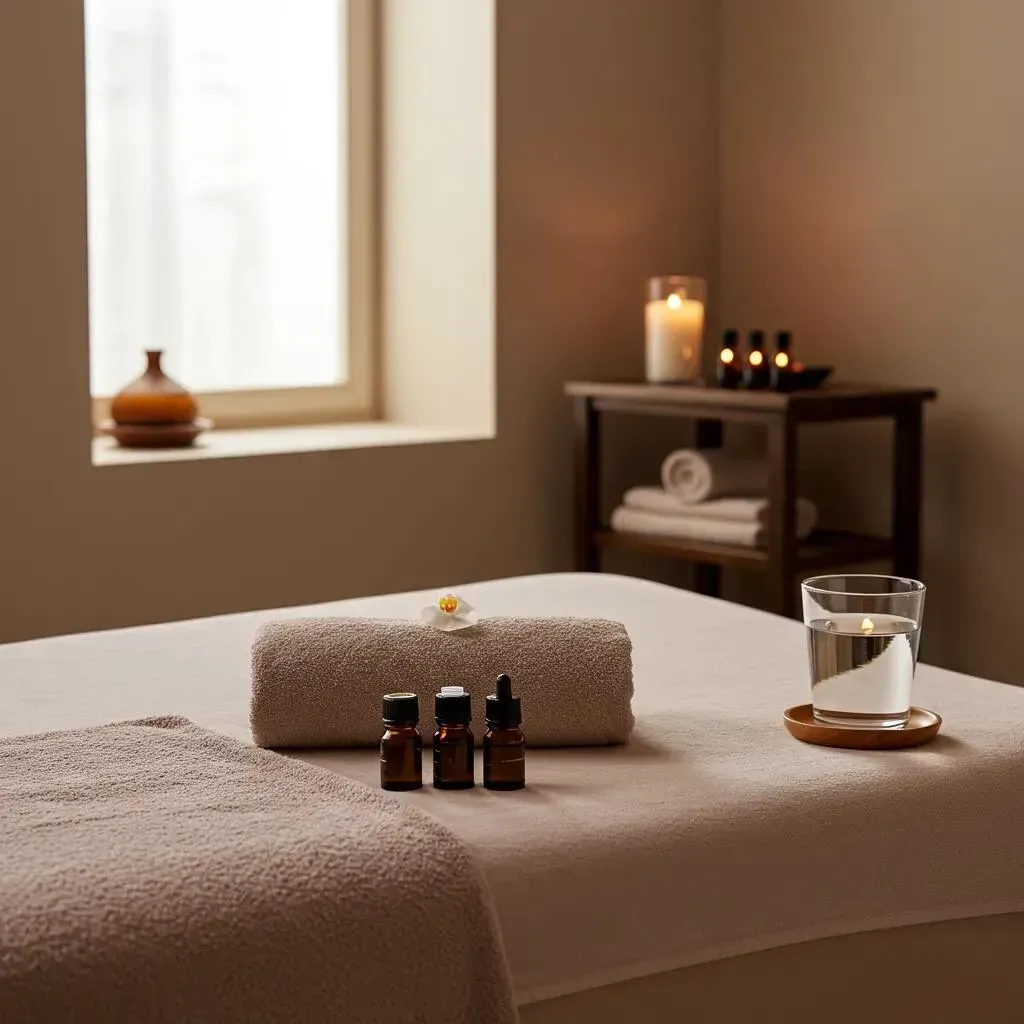Discover Local Salons Offering Anti-Aging Facials Near You
Best Anti-Aging Facials in Madison, AL: Top Local Salons for Skin Rejuvenation and Youthful Appearance

Anti-aging facials are targeted skin-rejuvenation procedures designed to reduce fine lines, correct uneven tone, and restore a more youthful appearance through a combination of exfoliation, stimulation, and topical infusion. This guide explains how the most effective anti-aging facials work, compares the leading treatment types available in Madison, AL, and maps common skin concerns to the therapies most likely to help. Many readers search for "best anti-aging facials Madison AL" or "HydraFacial Madison AL" when deciding between non-invasive options and physician-led procedures; this article focuses on the mechanisms, recovery expectations, and how to choose a local provider. You'll find clear comparisons of HydraFacial, microneedling, chemical peels, CO2 laser resurfacing, and red light therapy, plus practical checklists for preparation, a pricing context table, and answers to common patient questions. As you read, the content will help you understand which treatments match your goals, how they stimulate collagen and hyaluronic acid responses, and when to pursue a medical spa consultation in Madison for a personalized plan.
What Are the Best Anti-Aging Facial Treatments Available in Madison, AL?
Anti-aging facial treatments are a group of medical spa and salon procedures that use exfoliation, controlled injury, and topical infusions to improve texture, pigment, and structural support in aging skin. Each treatment type uses a specific mechanism—mechanical suction and serum infusion for HydraFacial, controlled micro-injury for microneedling, chemical exfoliation for peels, ablative energy for CO2 lasers, and photobiomodulation for red light therapy—to address different anti-aging concerns and stimulate collagen production. Choosing the right procedure depends on your primary concern (fine lines, deep wrinkles, pigmentation, or laxity), acceptable downtime, and the number of sessions needed to reach visible improvement. Below is a concise comparison of core treatments in Madison to help you weigh benefits and recovery before discussing personalized options with a provider. After this comparison, we summarize the clinical role each therapy plays in collagen remodeling and surface renewal to guide treatment selection.
HydraFacial, microneedling, chemical peels, CO2 laser resurfacing, and red light therapy are commonly offered across Madison providers and differ in invasiveness, downtime, and target issues. The table below compares the most relevant attributes—procedure type, downtime, ideal concerns, typical session count, and expected outcome—so you can quickly see which options align with your goals. Review these options, then consult a medical professional to develop a plan tailored to your skin type and history.
| Treatment | Procedure Type | Typical Downtime | Ideal Concerns | Typical Sessions |
|---|---|---|---|---|
| HydraFacial | Vortex-exfoliation + serum infusion | Minimal (same-day) | Fine lines, texture, hydration | 1–monthly for maintenance |
| Microneedling | Collagen induction via needle arrays | 1–7 days (depending on depth) | Fine lines, texture, acne scars | 3–6 sessions, spaced weeks apart |
| Chemical Peel (medium) | Controlled chemical exfoliation | 3–10 days | Hyperpigmentation, tone, superficial wrinkles | Series of 2–4 depending on strength |
| CO2 Laser Resurfacing | Ablative fractional laser passes | 7–21 days | Deep wrinkles, severe sun damage | Often 1 major treatment, sometimes with touch-ups |
| Red Light Therapy | Photobiomodulation (LED) | None | Inflammation, collagen stimulation, recovery adjunct | Series of sessions (weekly or multiple times weekly) |
This comparison clarifies trade-offs: less invasive therapies deliver fast recovery and subtle improvements, while ablative options like CO2 deliver more dramatic remodeling with longer downtime. Understanding these trade-offs leads naturally to the next question of how each modality achieves collagen stimulation and structural change.
How Does HydraFacial Work to Reduce Fine Lines and Improve Skin Texture?
HydraFacial is a multi-step, non-invasive facial that combines vortex-driven cleansing, chemical exfoliation, painless extraction, and targeted serum infusion to improve hydration and surface texture. The mechanism centers on immediate removal of debris and delivery of antioxidant and hydrator serums—such as hyaluronic acid and peptides—that plump fine lines and temporarily improve skin smoothness. Clinically, repeated treatments promote better epidermal turnover and sustained hydration, which reduces the appearance of fine lines and enhances overall radiance. Sessions are typically well-tolerated with minimal redness, making HydraFacial a suitable maintenance treatment or adjunct to more intensive procedures. If deeper structural change is needed, practitioners often pair HydraFacial with microneedling or medical-grade topical regimens to amplify collagen-building effects.
What Are the Anti-Aging Benefits of Microneedling and Collagen Induction Therapy?

Microneedling uses controlled micro-injury from a needle array to trigger the skin's wound-healing cascade, stimulating fibroblasts to produce new collagen and elastin for improved firmness and texture. This collagen induction mechanism gradually tightens crepey skin and reduces fine lines over a timeline that typically shows early improvements within weeks and more substantive remodeling after several months. Radiofrequency (RF) microneedling adds thermal energy to enhance deeper collagen contraction and can be useful for moderate laxity. Microneedling is often combined with topical growth factors, PRP, or medical serums to augment results, but it requires short recovery and strict post-procedure sun protection. Choosing needle depth and treatment intervals depends on the severity of skin damage and desired speed of results, which a consultation can clarify.
Microneedling (PCI Therapy) for Photoaged Skin: Efficacy and Scientific Basis
Demand for safe, less aggressive and cost-efficient treatment modality to improve skin quality and appearance following scarring or photoaging is increasing steadily. A treatment modality that preserves the epidermis while promoting regeneration rather than cicatrization would be ideal. Percutaneous collagen induction (PCI) therapy or microneedling is claimed to approach this ideal objective. The current comprehensive literature review is intended to analyze the scientific basis supporting this therapeutic modality and to evaluate the efficacy of PCI microneedling therapy versus no treatment of patients with photoaged skin and scars of various etiologies on aesthetic skin rejuvenation, skin tightening and scar quality in prospective, retrospective and experimental studies. Twenty-five published studies were identified and included in this review. Four publications are experimental animal studies; most clinical reports are case series or small cohort non-randomized studies or trials lacking methodological unity with a heterogenous mix of scars, wrinkles and skin laxity being treated. The majority are studies about management of scars of various etiologies while only 4 specifically investigated the effect of PCI on wrinkles and aging skin. One study compared burn scar erythema in the treated area to the untreated area, and 5 studies included histologic evaluation of biopsies. Despite PCI promising therapeutic benefits and its increasing cosmetic applications, the current literature review unfortunately revealed a limited number of high-quality studies mostly experimental. Data and conclusions of clinical studies must be carefully interpreted before translating the evidence presented into clinical recommendations. Microneedling: percutaneous collagen induction (PCI) therapy for management of scars and photoaged skin—scientific evidence and review of the literature, 2021
How Do Chemical Peels Help with Hyperpigmentation and Skin Tone in Mature Skin?

Chemical peels use acids (AHA, TCA and others) to remove damaged epidermal layers and accelerate skin turnover, which evens tone and reduces pigment irregularities common in mature skin. Superficial peels improve texture and brightness with minimal downtime, whereas medium-strength peels address deeper pigmentation and some fine wrinkles but require a longer recovery window. The exfoliation mechanism encourages fresh epidermal formation and can reveal more uniform pigmentation and smoother contour after healing. For mature or sensitive skin, conservative peel selection and preconditioning with medical-grade skincare reduce the risk of complications and support predictable results. Combining peels with topical retinoids and antioxidant regimens can lengthen benefit and maintain improvements.
Chemical Peels for Cosmetic Purposes: Treating Fine Lines and Photoaging
With the growth of cosmetic dermatology worldwide, treatments that are effective against skin diseases and augment beauty without prolonged recovery periods, or exposing patients to the risks of surgery, are increasing in popularity. Chemical peels are a commonly used, fast, safe and effective clinic room treatment that may be used for cosmetic purposes, such as for fine lines and photoageing, but also as primary or adjunct therapies for acne, pigmentary disorders and scarring. Clinicians are faced with specific challenges when using peels on ethnic skin (skin of colour). The higher risk of postinflammatory dyschromias and abnormal scarring makes peels potentially disfiguring. Clinicians should therefore have a sound knowledge of the various peels available and their safety in ethnic skin. This article aims to review the background, classification, various preparations, indications, patient assessment and complications of using chemical peels in ethnic skin. Chemical peels for post acne hyperpigmentation in skin of color, 2015
What Results Can You Expect from CO2 Laser Skin Resurfacing for Deep Wrinkles?
CO2 laser resurfacing is an ablative procedure that removes micro-columns of tissue to stimulate robust collagen remodeling and replace damaged dermis and epidermis, making it highly effective for deep wrinkles and significant sun damage. The mechanism—controlled tissue ablation followed by wound-healing and collagen synthesis—produces substantial textural improvement and tightening, often with long-lasting results after a single treatment, depending on the severity of damage. Recovery involves a period of pronounced redness, crusting, and re-epithelialization that can last one to three weeks, and the procedure carries higher risk of pigment changes, so medical oversight and strict aftercare are critical. Candidates typically undergo evaluation to ensure appropriate skin type and expectations before scheduling CO2 resurfacing.
How Does Red Light Therapy Support Skin Health and Anti-Aging?
Red light therapy (LED photobiomodulation) uses specific wavelengths to stimulate mitochondrial activity in skin cells, increase ATP production, and reduce inflammatory signaling; these changes support collagen production and faster tissue repair. This mechanism is non-ablative and painless, making red light therapy an ideal complement for accelerating recovery after more invasive facial procedures or as a low-downtime maintenance strategy to support collagen synthesis. Sessions are brief, cumulative, and generally require a series for measurable improvements in skin tone, reduced inflammation, and enhanced healing capacity. Because red light therapy lacks significant downtime, many clinics integrate it into multi-modal anti-aging plans to prolong treatment effects and improve patient comfort.
Which Local Salons and Medical Spas in Madison, AL Offer the Best Anti-Aging Facials?
Selecting a Madison provider depends on whether you want a salon-style facial or a medical spa experience that integrates physician oversight and medical-grade products. Medical spas and salons in Madison vary in offerings: some emphasize signature non-invasive facials and LED therapies, while others provide physician-supervised lasers and injectables. When comparing local options, consider treatment scope, available technologies, and whether medical-grade product lines are part of the long-term plan. Below is a short checklist to help you evaluate providers and find a clinic that fits your safety, results, and aftercare expectations.
- Look for providers offering a clear range of anti-aging modalities.
- Confirm availability of medical-grade skincare brands and post-procedure regimens.
- Evaluate whether the clinic provides consultative planning and treatment bundles.
This checklist helps prioritize safety and outcomes when reviewing listings. For local options, Madison Wellness & Aesthetic Center is a Madison medical spa that explicitly lists services aligned with the treatments above and may be a convenient option for personalized plans in the area.
What Makes Madison Wellness & Aesthetic Center a Leading Med Spa for Anti-Aging Facials?
Madison Wellness & Aesthetic Center operates as a medical spa in Madison, offering a comprehensive set of aesthetic services that match many anti-aging needs: HydraFacial, CO2 laser resurfacing, red light therapy, plasma lift, microneedling, microdermabrasion, and curated medical-grade skincare lines such as ZO, Obagi, Revision, Neova, and Theraderm. The clinic positions itself as both an information hub and a lead-generation practice, emphasizing personalized care and a comprehensive approach to wellness and aesthetics. For Madison residents seeking a local medical spa with multiple procedural options and physician-level modalities, Madison Wellness & Aesthetic Center lists free consultations and appointment scheduling to help patients design individualized plans. To visit or contact the clinic for an in-person assessment, you can use its published address and phone number to arrange a consultation and discuss treatment sequencing.
How Do Madison's Top Competitors Compare in Anti-Aging Facial Offerings?
Madison competitors present a range of strengths: some focus on integrative wellness and signature facials, others emphasize technical depth with lasers and injectables or physician supervision. Competitor content strengths often include detailed procedural pages for microneedling and lasers, signature HydraFacial packages, or bundled wellness approaches; content gaps commonly involve localized guidance and structured FAQ schema that help consumers compare options. When comparing providers, consider whether the clinic explains recovery timelines, uses medical-grade products, and outlines realistic expectations for improvement. Matching a provider to your priorities—fast recovery, maximal remodeling, or maintenance care—ensures better satisfaction and helps determine whether to pursue salon-style facials or a medical spa pathway.
Where Can You Find Personalized Anti-Aging Facial Treatments in Madison?
Finding personalized anti-aging plans requires evaluating provider credentials, treatment breadth, and product offerings, and prioritizing clinics that offer in-person assessments to create sequenced treatments. Look for clinics that perform a clinical skin assessment, discuss medical history, and propose multi-modal plans combining in-clinic procedures with medical-grade home regimens. When you need a local option, Madison Wellness & Aesthetic Center lists its Madison address and phone contact for scheduling free consultations—these consultations typically include assessment and treatment recommendations tailored to skin type and concerns. Scheduling a consultation is the best next step to receive a customized plan, and confirming product availability ensures cohesive in-clinic and at-home care.
How Much Do Anti-Aging Facials Cost in Madison, AL?
Anti-aging facial costs in Madison vary based on treatment complexity, provider expertise, number of sessions, and whether medical-grade products or physician oversight are included. Price influences include the modality (HydraFacial and red light sessions typically cost less than ablative CO2 procedures), the clinic's staffing model, and whether packages or multi-session series are offered. Because local pricing fluctuates and providers may bundle services differently, the most reliable way to get an accurate cost is through a consultation that accounts for your concerns and desired outcomes. Below is a generalized pricing context table to guide expectations and clarify which factors most commonly affect cost.
| Treatment | Mechanism | Biological Effect |
|---|---|---|
| Microneedling | Micro-injury → wound healing cascade | Fibroblast activation → new collagen, elastin |
| CO2 Laser | Ablative remodeling of epidermis/dermis | Significant collagen remodeling and resurfacing |
| HydraFacial | Exfoliation + serum infusion | Improved hydration, antioxidant delivery, surface renewal |
| Red Light Therapy | Mitochondrial stimulation (photobiomodulation) | Increased ATP → enhanced repair, reduced inflammation |
What Role Do Collagen, Elastin, and Hyaluronic Acid Play in Skin Rejuvenation?
Collagen provides tensile strength and structure, elastin allows skin to recoil and maintain elasticity, and hyaluronic acid binds water to give skin volume and hydration—together they create a youthful skin matrix. Aging reduces collagen and elastin synthesis and depletes hyaluronic acid, causing wrinkles, laxity, and loss of plumpness. Treatments aim to restore or stimulate these components: collagen induction therapies regenerate matrix proteins, topical and injectable hyaluronic strategies restore hydration and volume, and antioxidant regimens protect newly forming tissue. Restoring this triad underlies most anti-aging strategies and guides the selection of complementary in-clinic and at-home interventions.
How Do Treatments Like Microneedling and Red Light Therapy Boost Collagen?
Microneedling triggers a localized wound-healing response that recruits platelets and fibroblasts, increasing growth factors that drive new collagen and elastin deposition over weeks to months. Red light therapy enhances cellular energy via mitochondrial cytochrome c oxidase absorption of red/near-infrared light, raising ATP levels and accelerating repair processes while reducing inflammation. Both modalities complement each other: microneedling creates the stimulus for collagen production while red light therapy supports faster, more efficient tissue remodeling and reduced downtime. Together, they form a synergistic approach to structural rejuvenation.
Why Is Combining Facials with Medical-Grade Skincare Products Important?
Combining in-clinic procedures with physician-recommended medical-grade skincare sustains procedural gains, reduces complication risks, and supports ongoing collagen maturation and antioxidant protection. Ingredients like retinoids, peptides, and antioxidants encourage cellular turnover and protect new collagen, while sunscreens prevent photodamage that undermines treatment results. Proper timing—preconditioning skin with certain topical agents improves outcomes for peels and lasers, while post-procedure regimens focus on soothing, barrier repair, and sun protection—maximizes safety and maintains improvements. A coordinated plan between clinic treatments and at-home regimens produces the most durable, natural-looking rejuvenation.
This article has mapped the core anti-aging options available in Madison, explained how they work biologically, clarified who benefits most, and provided practical next steps for selecting and preparing for treatments. For Madison residents seeking a local medical spa option that offers many of the modalities discussed and free consultations to develop a customized plan, Madison Wellness & Aesthetic Center lists its Madison location and phone contact for scheduling in-person assessments and appointments.
Frequently Asked Questions
What should I expect during my first anti-aging facial appointment?
During your first anti-aging facial appointment, you can expect a thorough consultation where the provider assesses your skin type, discusses your concerns, and recommends suitable treatments. The actual facial will typically involve cleansing, exfoliation, and the application of serums tailored to your skin's needs. Depending on the treatment chosen, you may experience sensations ranging from gentle suction to mild warmth. Aftercare instructions will be provided to ensure optimal results and recovery. Overall, the experience is designed to be relaxing and rejuvenating.
How can I maintain the results of my anti-aging facial treatments?
To maintain the results of your anti-aging facial treatments, it’s essential to follow a consistent skincare routine that includes medical-grade products recommended by your provider. Daily use of sunscreen is crucial to protect your skin from UV damage, which can accelerate aging. Additionally, scheduling regular maintenance treatments, such as monthly HydraFacials or periodic microneedling sessions, can help sustain collagen production and skin hydration. Staying hydrated and maintaining a healthy diet also contribute to long-lasting results.
Are there any side effects associated with anti-aging facials?
While anti-aging facials are generally safe, some individuals may experience mild side effects depending on the treatment type. Common side effects include temporary redness, slight swelling, or sensitivity, particularly after more invasive procedures like microneedling or chemical peels. These effects usually subside within a few hours to a few days. It’s important to follow aftercare instructions provided by your practitioner to minimize risks and ensure proper healing. Always discuss any concerns with your provider before treatment.
Can anti-aging facials be customized for specific skin types?
Yes, anti-aging facials can be highly customized to suit individual skin types and concerns. Providers typically assess your skin during the initial consultation to determine the best approach. For example, those with sensitive skin may benefit from gentler treatments, while individuals with oily or acne-prone skin might require specific exfoliation techniques. Customization ensures that the treatment effectively addresses your unique needs, leading to better outcomes and enhanced satisfaction.
How do I choose the right provider for my anti-aging facial?
Choosing the right provider for your anti-aging facial involves researching their qualifications, experience, and the range of treatments they offer. Look for licensed medical professionals or certified aestheticians with a strong background in skin care. Reading reviews and testimonials from previous clients can provide insight into their expertise and patient satisfaction. Additionally, consider scheduling a consultation to discuss your goals and assess the provider's approach to personalized care before making a decision.
What is the difference between a salon facial and a medical spa facial?
The primary difference between a salon facial and a medical spa facial lies in the level of expertise and the types of treatments offered. Salon facials typically focus on relaxation and basic skin care, using cosmetic products for cleansing and hydration. In contrast, medical spa facials are performed by licensed professionals and may include advanced techniques like chemical peels, microneedling, or laser treatments. Medical spas often use medical-grade products and provide a more comprehensive approach to skin rejuvenation, addressing specific concerns with clinical efficacy.
Conclusion
Choosing the right anti-aging facial can significantly enhance your skin's appearance by addressing concerns like fine lines, uneven tone, and hydration. Understanding the various treatment options available in Madison, AL, empowers you to make informed decisions tailored to your unique skin needs. We encourage you to schedule a free consultation at Madison Wellness & Aesthetic Center to explore personalized treatment plans. Take the first step towards rejuvenated skin by reaching out today.












